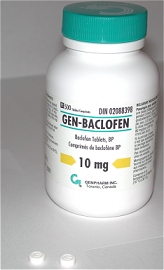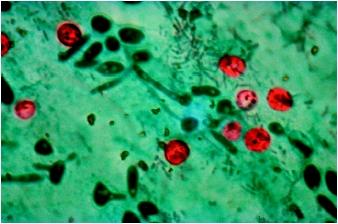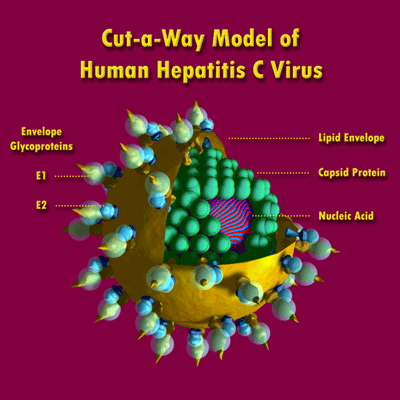Tones of Pictures, Most Commons and Mnemonics
Monday, October 01, 2007
usmlemd.blogspot.com to usmlemd.wordpress.com
Monday, September 24, 2007
BACLOFEN

Baclofen is a GabaB receptor agonist (fan of GabaB) that is inhiBitory at synapses in the spinal cord (at the Back).
Baclofen is a muscle relaxer and an antispastic agent.
Baclofen is used to treat muscle symptoms caused by multiple sclerosis, including spasm, pain, and stiffness.
Baclofen is used to treat muscle symptoms caused by multiple sclerosis, including spasm, pain, and stiffness.
The most common side effects associated with baclophen include drowsiness, dizziness, nausea and leg weakness. The incidence of these side effects is reduced by starting with a low dose of baclophen that is gradually increased. However, approximately one tenth of sufferers cannot tolerate baclophen. A rare complication is a confusional state that appears shortly after baclophen is started, but this resolves quickly when therapy is stopped. Baclophen should not be discontinued abruptly after prolonged use because hallucinations or seizures may occur. If these withdrawal symptoms do occur, the previous dose of baclophen is usually re-instituted and then gradually reduced.
Wednesday, September 12, 2007
Klebsiella
 I actually didn't know how currant jelly looks like. So, now I know and by the way I like this picture. One of the buzz words for Klebsiella pneumonia(most likely alcoholics and heavy smokers) is currant jelly like sputum. Despite the fact that Klebsiella pneumonia is very common in the group mansion above and you can see that in a question on the exam, don't get fooled about what is the MC pneumonia. This guy Strep Pneumo always wins.
I actually didn't know how currant jelly looks like. So, now I know and by the way I like this picture. One of the buzz words for Klebsiella pneumonia(most likely alcoholics and heavy smokers) is currant jelly like sputum. Despite the fact that Klebsiella pneumonia is very common in the group mansion above and you can see that in a question on the exam, don't get fooled about what is the MC pneumonia. This guy Strep Pneumo always wins.And don't forget that Klebsiella is associated with indwelling Katheters and UTIs.
Monday, September 10, 2007
Negative Birefringence

Liquid crystals are found to be birefringent, due to their anizotropic nature. That is, they demonstrate double refraction (having two indices of refraction). Light polarized parallel to the director has a different index of refraction (that is to say it travels at a different velocity) than light polarized perpendicular to the director.
Negative birefringence – yellow when is parallel to the light, and blue when is perpendicular.
LINKS
 I will make a list of some of the links to webpages that I found really useful:
I will make a list of some of the links to webpages that I found really useful:Anatomy-->Atlases:
1. http://www.univie.ac.at/anatomie2/plastination.html
2. http://www.anatomyatlases.org/
3. http://www9.biostr.washington.edu/da.html
4. http://www.neuroanatomy.wisc.edu/anatomy.htm
5. http://mywebpages.comcast.net/wnor/
6. http://www.siumed.edu/anatomy/
7. http://highered.mcgraw-hill.com/sites/0072495855/student_view0/
Tuesday, August 28, 2007
NAC
Friday, August 24, 2007
Oxygen Dissociatin Curve

This tool is very helpful to understand better the O2 dissociation curve.
The full text with explanation of O2Hb dissociation curve here.
Monday, August 13, 2007
Mnemonics
 I found Tommyk's notes 2 weeks ago and I can tell that there is a lot of very useful information like this one for example.
I found Tommyk's notes 2 weeks ago and I can tell that there is a lot of very useful information like this one for example. The NBME will ask a lot of questions about serum electrolytes and DIURETICS. This is come up over and over and over again!
LISTEN, for FHA (Acronym Federal Housing Authority). (which stands for Furosemide, HCTZ, and Acetazolamide), YOU LOSE K (cash) FROM THE SERUM!!!!!!!!! (Hypokalemia results) (Think of mnemonic, if the FHA comes, you likely have no Kash!)
LISTEN, if your patient wants a H (HI)- Fidelity (F) stereo, he has to BUY IT UP (B=Bi-carbonate) (Hydrochlorothiazide and Furosemide stands for the H and F), then you must BUY IT UP! ("Buy" sounds like Bicarbonate, and BUY IT UP means the "Buy"carbonate HCO3 levels in your blood will increase!) (LINK:metabolic alkalosis)
LISTEN, all Diuretics lower Magnesium, so THINK that if you sit down to pee (diuretic), you will also have a big MASSIVE GLOB of poop. The M in Massive and the G in Glob of poop stands for Mg coming out. (hypomagnesium)
LISTEN, ALL Diuretics raise uric acid in serum, lowering it in the renal tubules. This mnemonic is easy...DIURETIC SOUNDS LIKE URIC ACID both have "UR". Say it fast. then you will connect! And Diu"r"etic has "r" for raise in serum. (This is of clincal importance as Thiazide Diuretics are used to treat uric acid stones because while serum levels stay high, renal tubule levels remain low!)
LISTEN, the acronym ASA stands for aspirin, and aspirin Overdose is acidic. So the A (Amiloride), the S (Spironolactone), and A (Acetazolamide) . An aspirin Overdose gives you metabolic acidosis!!!!!!!
Also KNOW the connection that the K sparing diuretics STAys in serum. (S=spironolactone, T-triamterene, A-amiloride) (Usually, I found it helpful to recall that H and K stay together usually...) HCO3 leaves in the urine...
LISTEN, for Calcium ions it is tougher. But this works for me. I think of a S-Ca-fFold falling down a building. (You know, for painters). So, Calcium administration makes S (Spironolactone) and F (Furosemide) "fall" out of your urine! See the Ca in word S-Ca-Ffold!!!! (This is clincially important because LASIX or furosemide is given to CHF patients every second which predisposes them to Ca stones in kidney!
REPEAT THIS HIGH YIELD CONCEPTs UNTIL IT STICKS!!!!!! BEcause you will likely be asked this on your test because of the relation to renal stones....Ca for e.g. causes stones. Hypokalemia, Hyperacidosis...And this is SO IMPORTANT, you must repeat my mnemnoics over and over. They worked for a lot of people! And I spent a long time making up these memory mnemonics. Don't let them go to waste! Someone told me my mnemonics saved them! Thanks but please they are for everyone and they are useless unless you repeat them. Please e-mail me if you like the mnemonics. If they are bothersome, I will stop submitting them!!!!!
Saturday, August 11, 2007
Theca and Granulosa cells

LH stimulate Theca cells to produce androstendione, which inturn is given to Granulosa cells
FSH stimulate Granulosa cells conversion of androstendione to estradiol by aromatase
Theca cells-->Theca lutein cells---------->Progesterone, Androgens
Granulosa cells-->Granulosa lutein cells------ >Progesteron, Estrogen
The corpus luteum is formed by both granulosa cells and thecal cells after ovulation has occurred. The wall of the follicle collapses into a folded structure, which is characteristic for the corpus luteum. Vascularization increases and a connective tissue network is formed. Theca interna cells and granulosa cells triple in size and start accumulating lutein (Which hormone stimulates this process? Where is this hormone produced?) within a few hours after ovulation. They are now called granulosa lutein cells and theca lutein cells and produce progesterone and oestrogens.
Hormone secretion in the corpus luteum ceases within 14 days after ovulation if the oocyte is not fertilised. In this case, the corpus luteum degenerates into a corpus albicans - whitish scar tissue within the ovaries.
Hormone secretion in the corpus luteum ceases within 14 days after ovulation if the oocyte is not fertilised. In this case, the corpus luteum degenerates into a corpus albicans - whitish scar tissue within the ovaries.
Three major types of ovarian neoplasms are described, with epithelial cell tumors (70%) comprising the largest group of tumors. Germ cell tumors occur less frequently (20%), while sex cord–stromal tumors make up the smallest proportion, accounting for approximately 8% of all ovarian neoplasms.
Granulosa-theca cell tumors, more commonly known as granulosa cell tumors (GCTs), belong to the sex cord–stromal group and include tumors made up of granulosa cells, theca cells, and fibroblasts in varying degrees and combinations. GCTs account for approximately 2% of all ovarian tumors and can be divided into adult (95%) and juvenile (5%) types based on histologic findings.
Both subtypes commonly produce estrogen, and estrogen production often is the reason for early diagnosis.
Granulosa-theca cell tumors, more commonly known as granulosa cell tumors (GCTs), belong to the sex cord–stromal group and include tumors made up of granulosa cells, theca cells, and fibroblasts in varying degrees and combinations. GCTs account for approximately 2% of all ovarian tumors and can be divided into adult (95%) and juvenile (5%) types based on histologic findings.
Both subtypes commonly produce estrogen, and estrogen production often is the reason for early diagnosis.
Cryptosporidiosis


Cryptosporidium sp., an intracellular protozoan parasite. Using a modified cold Kinyoun acid-fast staining technique, and under an oil immersion lens the Cryptosporidium sp. oocysts, which are acid-fast stain red, and the yeast cells, which are not acid-fast stain green(picture1).
It exists in either the free-swimming (trophozoite) form or the oocyst (dormant) form. Cryptosporidium parvum is now recognized as a human pathogen which can cause severe diarrheal illness.
Big problem for immunocompromised patients (AIDS).
Wednesday, August 01, 2007
mRNA Translation Animations

There are a lot of animation for that process. I like particularly 2 of them:
http://www-class.unl.edu/biochem/gp2/m_biology/animation/gene/gene_a3.html
http://student.ccbcmd.edu/~gkaiser/biotutorials/protsyn/translat.html
Tuesday, July 31, 2007
The Central Dogma Of Molecular Biology


I found these very simple and usefull slideshow for the central dogma.
http://www.slideshare.net/cgales/central-dogma-and-protein-synthesis/
Ataxia Telangiectasia

Ataxia Telangiectasia------>IgA deficiency
1.cereberal ataxia(narrow-based gate)
2.telangiectasia
3.risk of sinopulmonary infections
Defect in the DNA break repair gene ATM (Ataxia Telangiectasia Mutant).
IgA deficiency-infections of the upper and lower airways.
ATM gene encodes a kinase essential for p53 activity. ATM is inactivated in ataxia telangiectasia-->hypersensitivity to x-rays and predisposition to lymphomas.
Wednesday, July 25, 2007
Petechiae and Ecchymoses

 The former is petechiae-small size(pinpoint areas).
The former is petechiae-small size(pinpoint areas).The latter is ecchymoses-bigger size.
http://www.netdoctor.co.uk/diseases/facts/purpura.htm
In few days after that post I had a question from the www.usmleworld.com question bank and according to them, the differences between petechiae, purpurae and ecchymoses are based on their size. For some reason I taught that both petechiae and ecchymoses are some kind of purpura, because of their color. Too busy to check that facts. May be later on, and also I trust usmleworld, these guys really rock.
Yes, I did quick check. That is right.
1.petechiae-less than 0.5 cm
2.purpurae-from 0.5 to 1 cm
3.ecchymoses-more than 1 cm
So, on the first picture there is a combination of petechiae and purpurae.
Monday, July 23, 2007
Monday, July 16, 2007
Perifollicular hemorrhage and Ring sideroblasts


Goljan the Great made this association between this two completely different findings, based on the form of a "ring". The only thing I can do is just put them into pictures.
A little bit more for the perifollicular hemorrhage: http://archderm.ama-assn.org/cgi/content/full/142/5/658
and for ring sideroblasts: http://www.academic.marist.edu/~jzmz/topics/erythroleukemia/myelomono34.html
Saturday, July 14, 2007

To be honest I totally forgot about Telomerase and Retrotransposons. So, humans also have reverse transcriptases.
http://bcs.whfreeman.com/lodish5e/pages/bcs-main.asp?s=10000&n=00010&i=10010.03&v=chapter&o=00PRS&ns=0&uid=0&rau=0
DNA replication
I know that when you read DNA replication is pretty clear, but the next animation will be very helpful, I guess.
MM:
1. dna A protein is the 1st one binding to DNA in the beginning of the replication
2. uRacil-->RNA
3. HELIX=SPIRAL-->Helicase is an enzyme that breaks the Hydrogen bonds, holding the double stranded Helical=Spiral DNA together. Nucleases break PDE bonds
4. DNA polymerase III starts form the 3’ exit of the RNA primer. Polymerization is always from the 3’ exit, but in 5'-->3’ direction
Wednesday, July 11, 2007
Pitting edema
Wednesday, July 04, 2007
Thursday, June 14, 2007
Schistocytes aka aka aka

Red cell fragmentation
aka/or
Schistocytes
aka/or
Schizocytes
aka/or
Helmet cells
aka/or
Schistocytes
aka/or
Schizocytes
aka/or
Helmet cells
Schistocytes are fragmented red blood cells, and indicate mechanical damage causing hemolysis. The commonest cause is probably the presence of a mechanical heart valve, particularly when dysfunctional. Hemolytic Uremic Syndrome, Thrombotic Thrombocytopenic Purpura, and Disseminated Intravascular Coagulation are other causes.
Wednesday, June 13, 2007
Intestinal rotation
Tuesday, June 12, 2007
ELISA test
 ELISA seems very easy, but usually students make mistakes on the exam. This animation shows the test step by step. There are direct and indirect ELISA. Tip to remember. In direct both antibodies bind directly to the antigen.
ELISA seems very easy, but usually students make mistakes on the exam. This animation shows the test step by step. There are direct and indirect ELISA. Tip to remember. In direct both antibodies bind directly to the antigen.http://www.sumanasinc.com/webcontent/anisamples/molecularbiology/ELISA.html
Thursday, June 07, 2007
Zinc Zinc Zinc

Acrodermatitis enteropathica:
1. Inborn error of zinc metabolism that is inherited as an autosomal recessive disorder
2. Zinc deficiency
symptoms: periorificial and acral dermatitis, growth retardation, hypogonadism, diarrhea, behavioral changes, and neurologic disturbances.
Acrodermatitis enteropathica links:
Wednesday, June 06, 2007
HBV genome replication
Tuesday, June 05, 2007
Antivirus Therapy

Za-NA-mivir and Osel-NA-mivir(oseltamivir)>>>both are Neuro-Aminidase inhibitors
They inhibit Influenza A and B Neuro-Aminidase(clips off sialic acids, thus aiding in release of virus).
Clinical use: prophylaxis mainly, but may decrease duration of flu symptoms by 2-3 days.
Side effects: nausea and vomiting
Saturday, June 02, 2007
Cholera Toxin
Tuesday, May 29, 2007
1) Open Angle Glaucoma.
This is the most common form of glaucoma in Western populations and is caused by the trabecular meshwork becoming silted up.

2) Chronic Closed Angle Glaucoma.
This is caused by blocked drainage through a narrow angle between the iris and the cornea with resultant scarring of the trabecular meshwork. It is more common in Asian and Chinese populations.

This is the most common form of glaucoma in Western populations and is caused by the trabecular meshwork becoming silted up.

2) Chronic Closed Angle Glaucoma.
This is caused by blocked drainage through a narrow angle between the iris and the cornea with resultant scarring of the trabecular meshwork. It is more common in Asian and Chinese populations.

Wednesday, May 23, 2007
Macular Degeneration

Macular Degeneration is the MCC of blindness in people over 55 years old in the US. The visual defect is central scotoma.
Dry Macular Degeneration-fatty tissue(drusen) between the retina and Bruch's membrane.
Wet Macular Degeneration-abnormal blood vessels grow behind the macula and bleed.
http://www.lowvisionclub.com/articles/seewhatisee.html
Saturday, May 19, 2007
 Chla-MYdia lacks MYramic acid
Chla-MYdia lacks MYramic acid
some more pictures
http://www.lib.uiowa.edu/hardin/md/chlamydiapictures.html
and chlamidia trachomatis development cycle
http://www.chlamydiae.com/docs/biology/biol_devreg.asp
I came up with a new mnemonic yesterday
Obstructive-COPD or COPDstructive <80% FEV1/FVC
Restricive---ARDS or A-ReDStrictive >80% FEV1/FVC
O is before R in the alphabet, and Obstructive is <80%
Restrictive is > 80%
Check this COPD video: http://allergy.health.ivillage.com/allergyasthmabasics/bronchoprovocationtest.cfm
Restricive---ARDS or A-ReDStrictive >80% FEV1/FVC
O is before R in the alphabet, and Obstructive is <80%
Restrictive is > 80%
Check this COPD video: http://allergy.health.ivillage.com/allergyasthmabasics/bronchoprovocationtest.cfm
Start
This is the first post. When I have time I will try to keep the blog up to date. Everybody is very welcome to help.


Subscribe to:
Posts (Atom)












+aka+Kulchtizski+cells+aka+enterochromafin+cells.jpg)